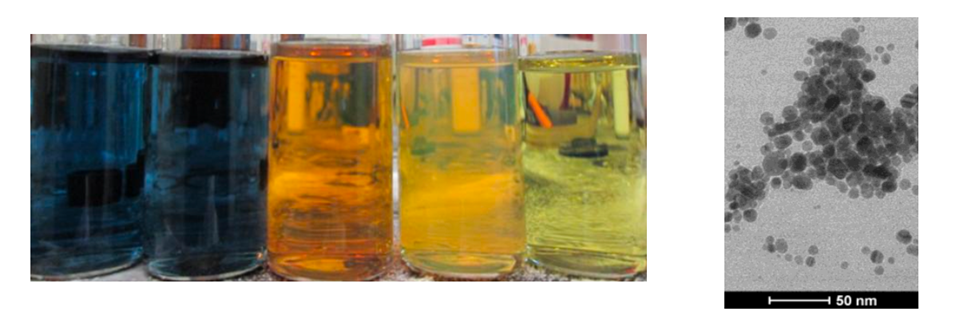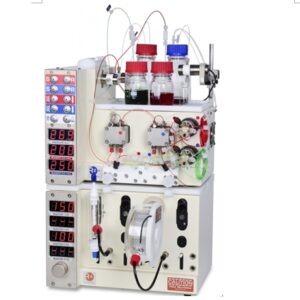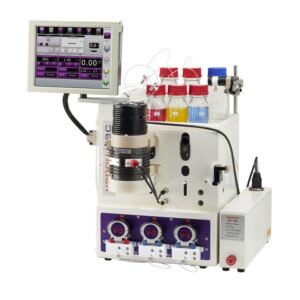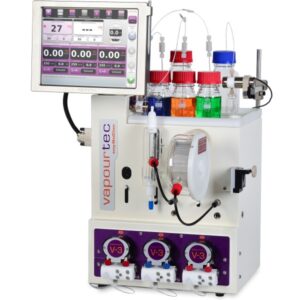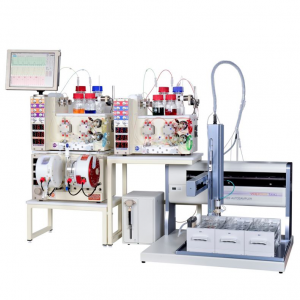E-Series – Preparation of Silver Nanoparticles under Continuous Flow Conditions
This application note illustrates the use of the Vapourtec E-Series system to nanoparticles under continuous flow conditions. Two classes of silver nanoparticles are reported.
Background
Continuous flow is finding applications not only in organic synthesis but also for inorganic chemistry. One example is the preparation of metal nanoparticles. Metal nanoparticles are used in a wide range of applications.1 In medicine, they can be used as antioxidants to remove oxygen free radicals that are present following a traumatic injury or can assist in bone growth around dental or joint implants. In the materials industry they can be used to provide a barrier to gasses or moisture in plastic films used for packaging or can be dispersed in industrial coatings to protect wood, plastic, and textiles from exposure to UV radiation. Silver nanoparticles have been impregnated in fabric to kill bacteria, making clothing odor-resistant From an environmental perspective, metal nanoparticles can be used as catalysts to break down oil in the ground or volatile organic pollutants in the air.
The first approach, based on a batch method developed by Mirkin2 and later modified by Kitaev,3 involves the use of sodium borohydride to reduce silver nitrate. As the silver ions are reduced, silver atoms begin to aggregate, forming nanoparticles in the presence of surface stabilizing and shape- and size-modifying agents. Sodium citrate is used both as a buffer to maintain a neutral or weakly basic pH of the solution and to charge stabilize the silver nanoparticles. Hydrogen peroxide is used to facilitate the formation of shape-selected nanoparticles by serving as an etching agent. Finally, potassium bromide is added to the reaction to control particle size. Bromide ions bind strongly to the silver surface, forming silver bromide that arrests growth of the silver nanoparticle. By using different concentrations of bromide in the reaction, it is possible to vary the size of the final nanoparticles. The preparation of the nanoparticles is performed at room temperature.
The second approach, based on a batch method by Hasan,4 uses polyethyleneglycol (PEG) to reduce silver nitrate to silver ions. Polyvinylpyrrolidone (PVP) is used as a capping agent to control nanoparticle size. Since the reaction of PEG with silver nitrate is relatively slow, when operating in batch the reaction mixture is heated to 90 °C in a water bath for up to 90 min. In flow, the reaction can be performed with a residence time of 5 min, operating at 120 °C.
| 產品型錄
Vapourtec 產品型錄下載
【Vapourtec】官網

